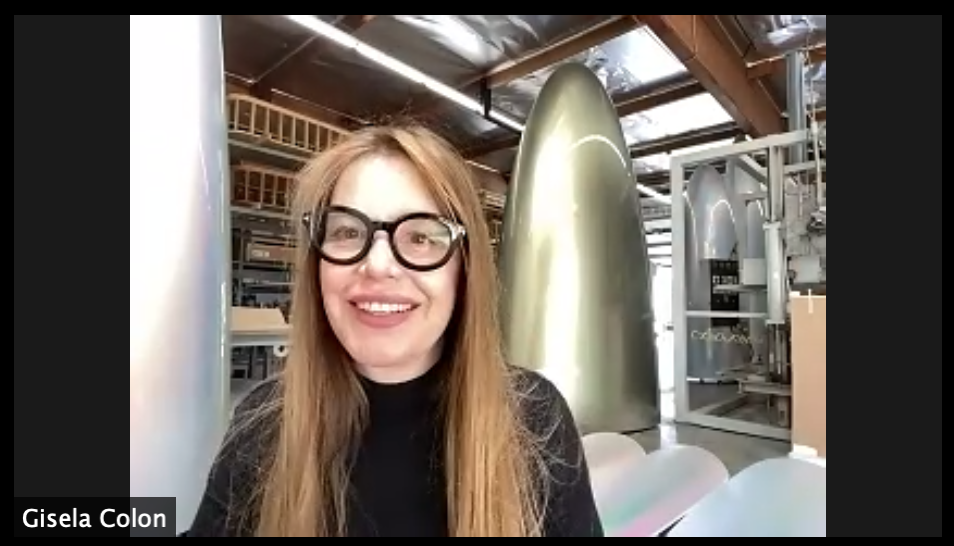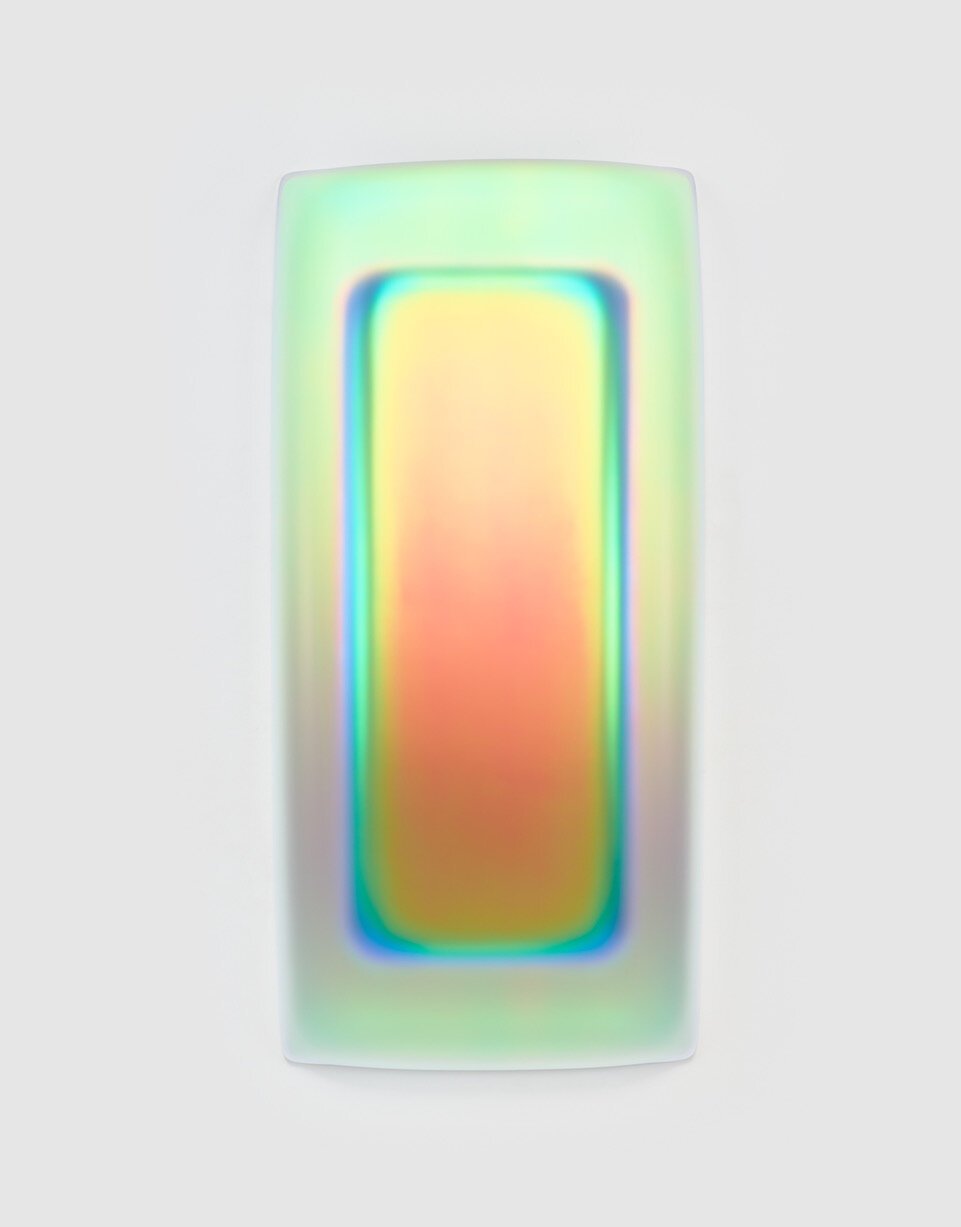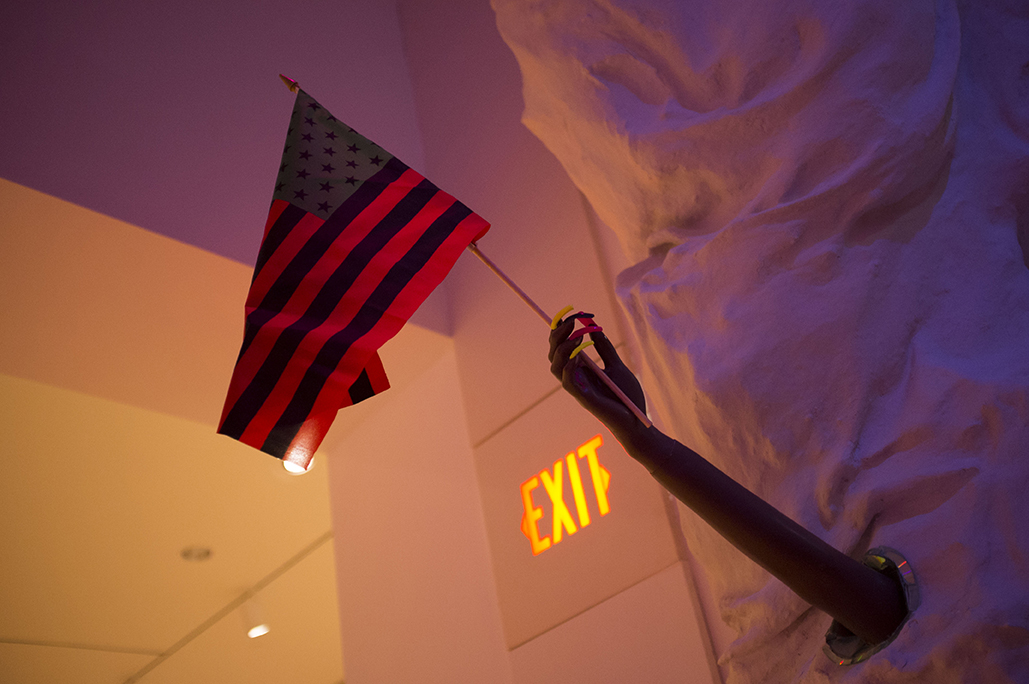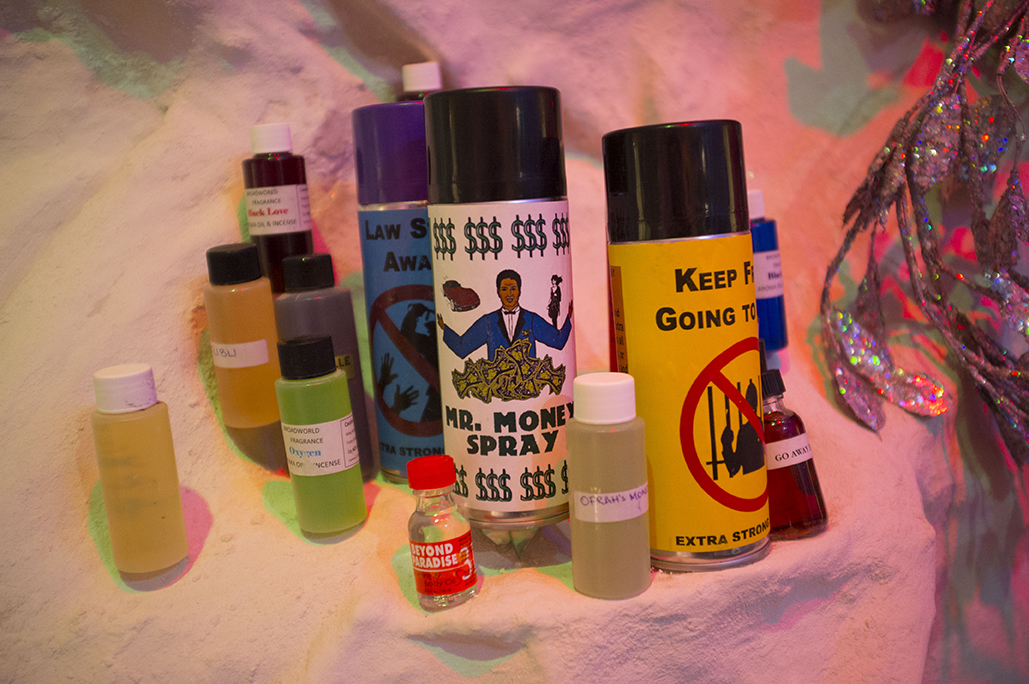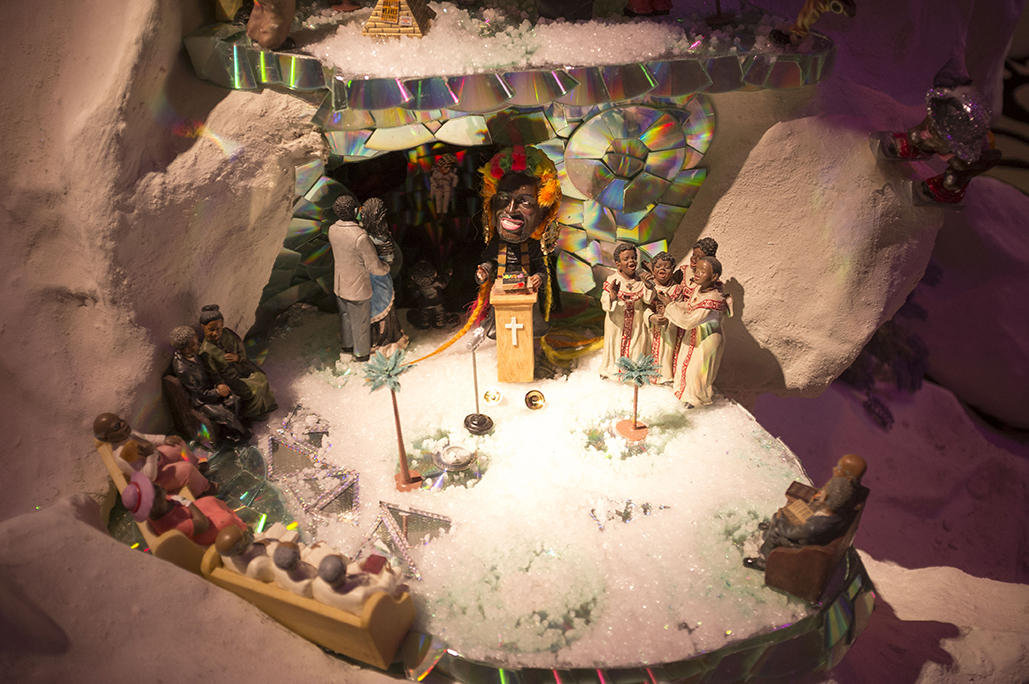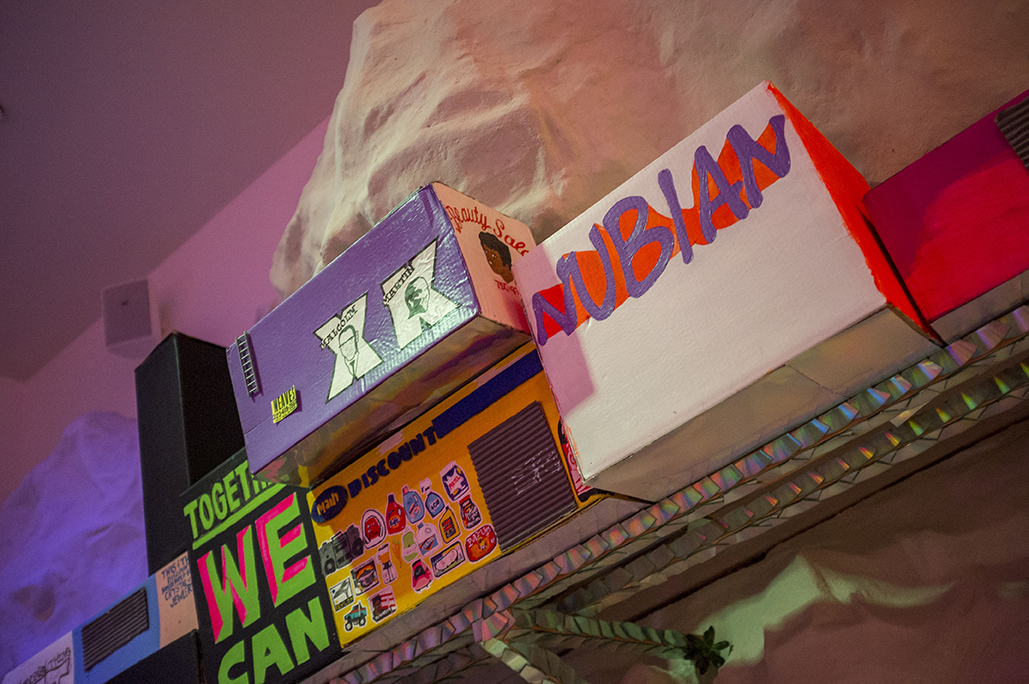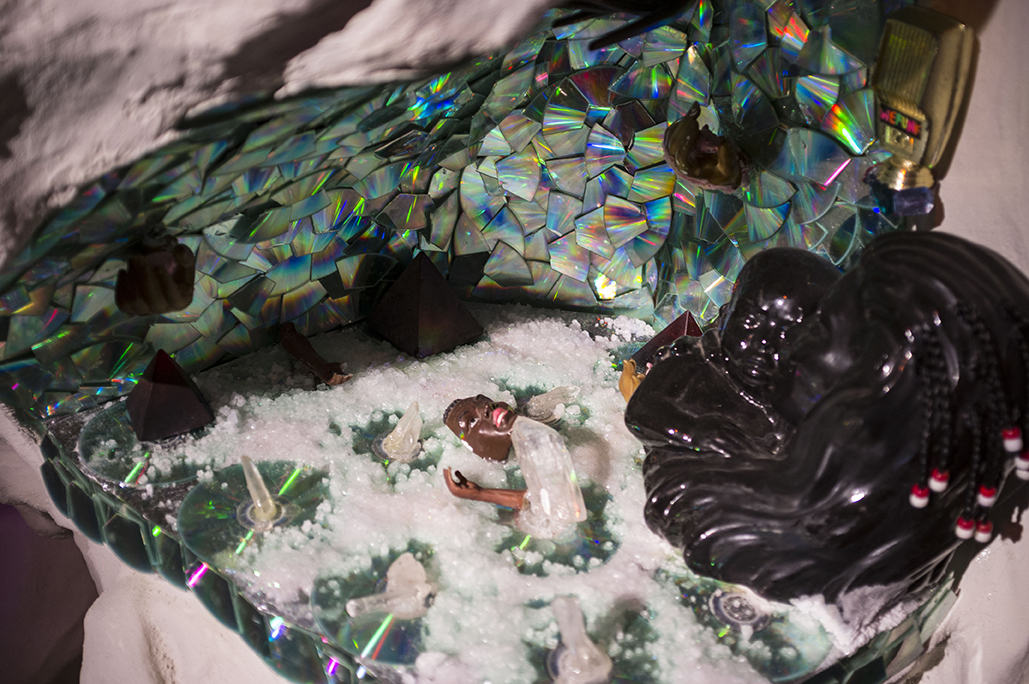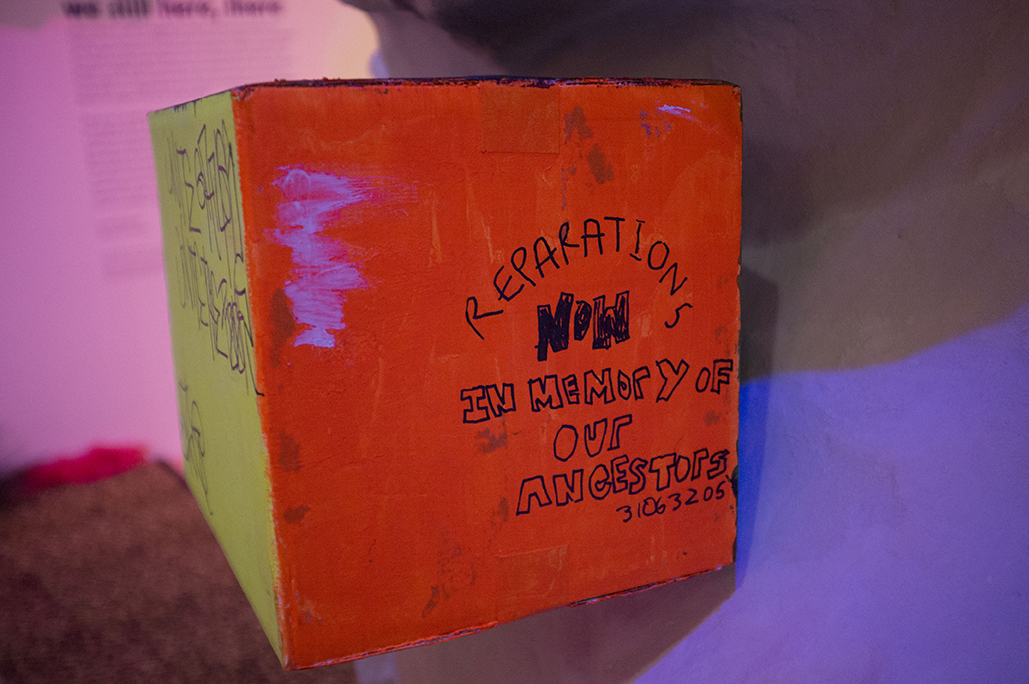interview by Summer Bowie
I conducted this interview with Gisela Colón on November 19, 2020, just after a mysterious obelisk-like structure was discovered in Utah’s Red Rock Country, and just days before the discovery was announced. Exactly when this crudely bolted, John McCracken-like monolith was initially installed is a mystery. That it was found by state employees counting sheep has been described as the most 2020 thing of 2020. Since then, multiple monoliths of varied fashion have been appearing and disappearing around the world, leading to a magnifying force of everything from commercial opportunists, to alien conspiracy theorists, to a Christian military LARPing crusade. Meanwhile, Gisela has been installing her solo exhibition, EXISTENTIAL TIME, Exploring Cosmic Past, Present and Future, of monolith and rectanguloid sculptures created in quarantine from optical acrylics and aerospace carbon fiber. Her unique sculptural language embodies the way that time expands, retracts and collapses. Her two short films express the anxieties that result from isolation and inertness. Her inquiries into the laws of physics address non-linear time flows and they provide the viewer with a sensory and intellectual experience in the grand cosmic sense of time and space. In essence, these “organic minimal” forms inherently attract a diversified coterie of forces that might point toward all the reasons we could be feeling our fragmented world suddenly culled together by a mysterious ping.
SUMMER BOWIE: You studied economics in Puerto Rico, and then you came to Los Angeles to study law, but how exactly did you realize that your career would be at the intersection of art and aerospace technology?
GISELA COLÓN: I grew up in Puerto Rico and I went to University of Puerto Rico, studying economics with a minor in political science, but I was a painter very early on with my mother. We painted for years together, since I was four or five years old. I made paintings of everything around me in Puerto Rico, which is a particularly diverse biological region. So I painted still lifes and landscapes, spent a lot of time hiking in the rainforest, on the beach–I was exposed through my Puerto Rican upbringing to a really vibrant, alive biological world that’s at the root of all of my work. That’s my primal source where I go back to everything. When I graduated from university, I came to Los Angeles to study law, not because I was fascinated by law at all, but because I grew up fairly poor. It was survival mode: if I study law, I will be able to understand society and how society functions, especially as a woman growing up in Puerto Rico. It wasn’t easy, I lost my mother at twelve after she went through a terrible divorce with my father. There was a lot of violence in the men around me, everybody carried guns. So for pragmatic and practical reasons, I studied law in my twenties, but I kept on going back to the painting, and the art, and thinking, this is what I love doing. I created so much art in my youth and I want to continue to do it, and it worked its way into the right time.
BOWIE: Your work draws this very seamless connection between science and art. It seems like you’re constantly fusing the artistic sensibilities of your mother with the scientific ambitions of your father.
COLÓN: You just hit the nail on the head. I was brought up with both science and art very actively because my dad—being a PhD in chemistry—he always had all of these chemistry sets around, and we experimented with crazy things. My Puerto Rican grandmother was a pharmacist, so in her closet she had all of these medicine bottles and syringes lying around. I would grab them and start taking stuff out with the syringes as a kid and go inject the banana leaves, and then take the banana leaves and cook them in a pot. We were always making concoctions and chemistry things, and so it was really a duality of this art and science as a child that now I combine again.
In fourth grade, I wanted to be a paleontologist and dig up dinosaur bones because it was so fascinating, looking at the rocks and the minerals. I went through that on my own, loving the earth and loving the kind of archaeological vestiges, or past history of our existence on Earth.
Gisela Colón, Rectanguloid (Quartz Spectrum), 2020. Blow-molded acrylic. 91.25 x 43.5 x 6 in. Courtesy of the artist and GAVLAK Los Angeles / Palm Beach.
By fifth grade, I started really studying outer space and science, and I was just fascinated by the moon. I’d spend hours looking up at the moon and the sun and trying to identify the planets at night in the sky, and I said I want to be an astronaut. I remember my mother saying, “You can be whatever you want to be, but if you’re an astronaut, you’re never going to be able to get married and have kids.” It was the traditional woman’s view of the world. That wouldn’t have deterred me per se, but it made me think twice–do I really want to go and do this? Then by sixth grade, I was back onto loving the art. It was just as a child, going through all the different progressions and iterations of your thoughts and your environment. Put it all in a soup pot, and then years later it comes out.
BOWIE: It seems a great many layers of your identity were established at a very early age. A lot of artists emulate other artists early on in their practice, and your earliest works were often compared to many Light and Space artists like Craig Kauffman and Robert Irwin, but was there a defining moment when it felt like your works were really your own?
COLÓN: Oh yeah, absolutely. When I first started painting, my earlier influences were more like the Latin American Op Artists that I had studied in books because I’m self-taught, so I would read about Carlos Cruz-Diez, and Soto, and all the traditional Latin painters, and then I became friends with a lot of the Light and Space contingency of older generation artists. I read all of Robert Irwin’s manifestos on perceptualism, and then I really got into minimalism and started spending a lot of time in Marfa studying Judd and Flavin and Doug Wheeler, John McCracken, and on and on. There was a phase there in the middle, what I call my transitional phase. When I first started working with plastic, I started painting the plastic similar to Kauffman, that was my springboard. Then, within a very few short months, I said, “this is not my thing because I have to pursue something different that has not been done before.”
That’s when I started experimenting with these new optical materials. There’s no paint involved, and it was like I had this eureka moment where I would form a piece, and then I’d put it on the floor, and I’d put something underneath it, and then I’d form another layer until I struck upon this whole layering of materials, which created a prism. It’s the point of view of a woman and of a Latinx artist, because that’s the other dimensionality. It really pisses me off when people say, “Oh, you’re a second generation space artist.” No, I’m not! Not even fifth generation, for god’s sake. It’s been sixty years. I am a Latin woman in the 21st century using modern materials that had never been used before and creating my own language, my own vocabulary, which I’ve titled organic minimalism. It’s a new and different interpretation from the point of view of somebody who puts life and this whole Latin point of view in their objects.
Gisela Colón, Rectanguloid (Quartz Spectrum), 2020. Blow-molded acrylic. 91.25 x 43.5 x 6 in. Courtesy of the artist and GAVLAK Los Angeles / Palm Beach.
BOWIE: Another thing I think that struck me is the way that your works are often considered a feminist take on Finish Fetish, and yet I’d say there’s a rather loud expression of femininity that has gone almost unrecognized in the works of say, Billy Al Bengston or Peter Alexander, et al.
COLÓN: Don’t even get me started on that topic because I’ve written a whole essay on this—not published yet—but have you studied Craig Kauffman’s work? Pink bubbles...think about this, the titles. Bubbles. He made dishes, he made donuts. There were all these things that belong in the kitchen. It was the purview in that era of women, and most of his colors and his glitter—oh, his flowers contain glitter—so if you look at all the titles, flowers, dishes, donuts, loops—you know loops that look like a piece of clothing hanging on the loop? Like on a clothesline? To me, his entire oeuvre, when I look at it, is made by a woman, except that he was a man.
I’m taking the masculine, like these monoliths, which have destructive references to projectiles, bullets, rockets and missiles, and feminizing it; softening it to the world. I reference Judy Chicago a lot in this process because her atmospheres from the 1970s are precedent. Basically, what she did is she put these colors out into the world that were the feminine impulse and softened things. I’m putting these impulses of women, and you could say femininity, but it’s really more feminist. It’s saying, “I can tackle the purview of men. I can tackle these forms and, as a woman, be fluid in the gender approach to my work. I can do all this and still be strong and create meaningful work.” It’s this fluid gender spectrum that’s embedded in the work, because when you look at some of my more organic forms, they’re vessels for life, like cells or things that generate life.
BOWIE: It’s really interesting because they have a very phallic shape, and yet at the same time, those nuclei are almost like the yolks of an egg.
COLÓN: Well also it could be phallic penetration, or reproduction—some people say they see a womb and the seed of a baby, or life inside. It really fluctuates fluidly between genders. It’s really oscillating between masculine and feminine. I can take anything; I can go from masculine to feminine and back.
BOWIE: There’s something to be said about the subtlety of such a subversion. At first glance, the works feel anything but political. You’re experiencing them on such a sensational level, moving around them, watching them change, and it takes a while for all of the implications to set in, which is really nice. You have to sit with it for a moment while it all sinks in.
Gisela Colón, Rectanguloid (Rubidium Spectrum), 2020. Blow-molded acrylic. 91.25 x 43.5 x 6 in. Courtesy of the artist and GAVLAK Los Angeles / Palm Beach.
COLÓN: What you’re getting at is the whole topic of beauty as a concept in art, and beauty is a bad word. You’re not supposed to make beautiful art, or you’re not supposed to make art that is attractive to the eye, but there’s a wide range of artists that are abstractionists that have made beautiful work, like Sam Gilliam. They’re finally getting recognized as people realize it’s okay to make beautiful work with an undertone of political statement that’s not always specifically identified, but it’s there by virtue of its existence. It’s there by virtue of the fact that the artist that is making it is making this kind of work. That’s the political statement.
BOWIE: You make works that change color and form as the viewer moves, and these qualities are highly sensitive to the environment that surrounds them. Are the environmental conditions of the exhibition space something that you consider before or after making the work?
COLÓN: I never considered it before because I make the work knowing that it is a variable and mutable object and that it will alter depending on where you place it and who’s looking at it. Now, I do like presenting it in the proper lighting. Obviously once it gets into the commercial gallery setting or the museum setting, I want to make sure that everything is lit properly so that the viewers can really experience the full spectrum, but the works are alive. It’s kind of like they’re alive and they do things sometimes that you’re not expecting, so they have a life of their own.
BOWIE: And when people collect the works, do you prescribe the conditions of the environment they’re displayed in at all?
COLÓN: I would prescribe a proper lighting, but it’s really up to them. It’s their work. If they want to experience something a little differently, that’s them. I’ve had collectors who have said to me, “Oh my god, during the day it looks one way, and in the middle of the night, I walked around the living room, everything was turned off, and all of a sudden the thing was glowing at me.” It’s really up to the collector to enjoy it, and that’s part of the perceptual experience that it really is in the eye of the beholder, it’s participatory. The ultimate enjoyer of the work completes the experience.
Gisela Colón, Rectanguloid (Gamma Spectrum), 2020. Blow-molded acrylic. 91.25 x 43.5 x 6 in. Courtesy of the artist and GAVLAK Los Angeles / Palm Beach.
BOWIE: I don’t think your work is ever acknowledged as performance, but there’s a performative aspect to it because the object is always performing in relationship to the viewer and the environment.
COLÓN: It is, but what I think you’re hitting on is the element of time. Performance is time, but in this case what you encounter is a real sense of memory. You can have a memory of an object, and have that picture in your head, and then encounter it at a later time and it changed completely. So, the performative aspect even goes beyond just the moment, but it involves memories and the capturing of ideas that will resurface later on. This whole concept of collapsing time, existential time, is woven into that participatory aspect that you’re talking about.
BOWIE: How has the use of a time-based medium such as film made it easier or more challenging to address the non-linearity of time?
COLÓN: Well in fact, that was the greatest kind of paradox. Here I was talking about this stasis and paralysis and inertia, yet the only way of communicating it effectively was through this time-based medium, which takes you through the feeling quickly. So it was a paradoxical thing, but I enjoyed doing it. I think it’ll be effective.
BOWIE: When you’re making a work that changes with your every movement and that changes with the environment, how do you know that it’s done?
COLÓN: It’s a real visceral feeling. You know how, at some point when life started in the little cesspool of hot water, and there was that initial ray of light that came through the pond, and somehow that first cell started—that primeval, primordial spark of energy? I can feel it because that’s what I look for. That’s what I tap into when I’m making these pieces. When it’s completed is when I finally look down at it and it glows back at me like it’s alive. Then, I have that recognition that we have in ourselves. I say we’re all composed of stardust. We go back eons and eons into the universe, before time, so we have that instinctual knowledge, and a lot people don’t access it, or they don’t tap into it, but I always talk about how you can feel that if you just quiet the noise around you, get off of Instagram, and just really focus for a minute. You’ll feel what it is to be alive because it’s in your cells. I use the elliptical form a lot and that curvature which is present in our cells. Even our DNA strands involve movement, so this whole concept of movement in art is present inside us. We never stop moving; our cells never stop multiplying. I know when a piece is ready because I can feel it in my cells.
BOWIE: We are so used to experiencing time in this way where we take little snapshots of things, and we think of life happening in these blocks, when actually it is this amorphous, constantly moving thing. Looking at it like still images helps us to understand the world around us, but when we can’t give into that deep time, to that cosmic time, we lose our ability to instinctively feel when things are arriving or going.
COLÓN: Absolutely, because you don’t experience the passage of time absent change around you, which is why the quarantine was so nerve-wracking. There wasn’t much moving or changing, yet time was passing, and so yes, it’s that whole tapping into the cosmological realm that I think we really need in this day and age, just to check ourselves. I think a lot of my work, at the core, tries to address that; to bring certain feelings about in the people who view it, to go to that primeval source of life. The cosmological realm just fascinates me. There’s so much out there, the unknown, and I feel like we’re all searching for something, and nobody really talks about it, but it’s right there. All you gotta do is go out at night and look up in the sky, and when you really look at the stars and the moon–I know it sounds kind of superficial, but it’s not. When you really take it all in, it’s magnificent, what’s out there for us to access that we just don’t see every day.
EXISTENTIAL TIME, Exploring Cosmic Past, Present and Future is on view through January 3 @ GAVLAK Palm Beach 340 Royal Poinciana Way, Suite M334

